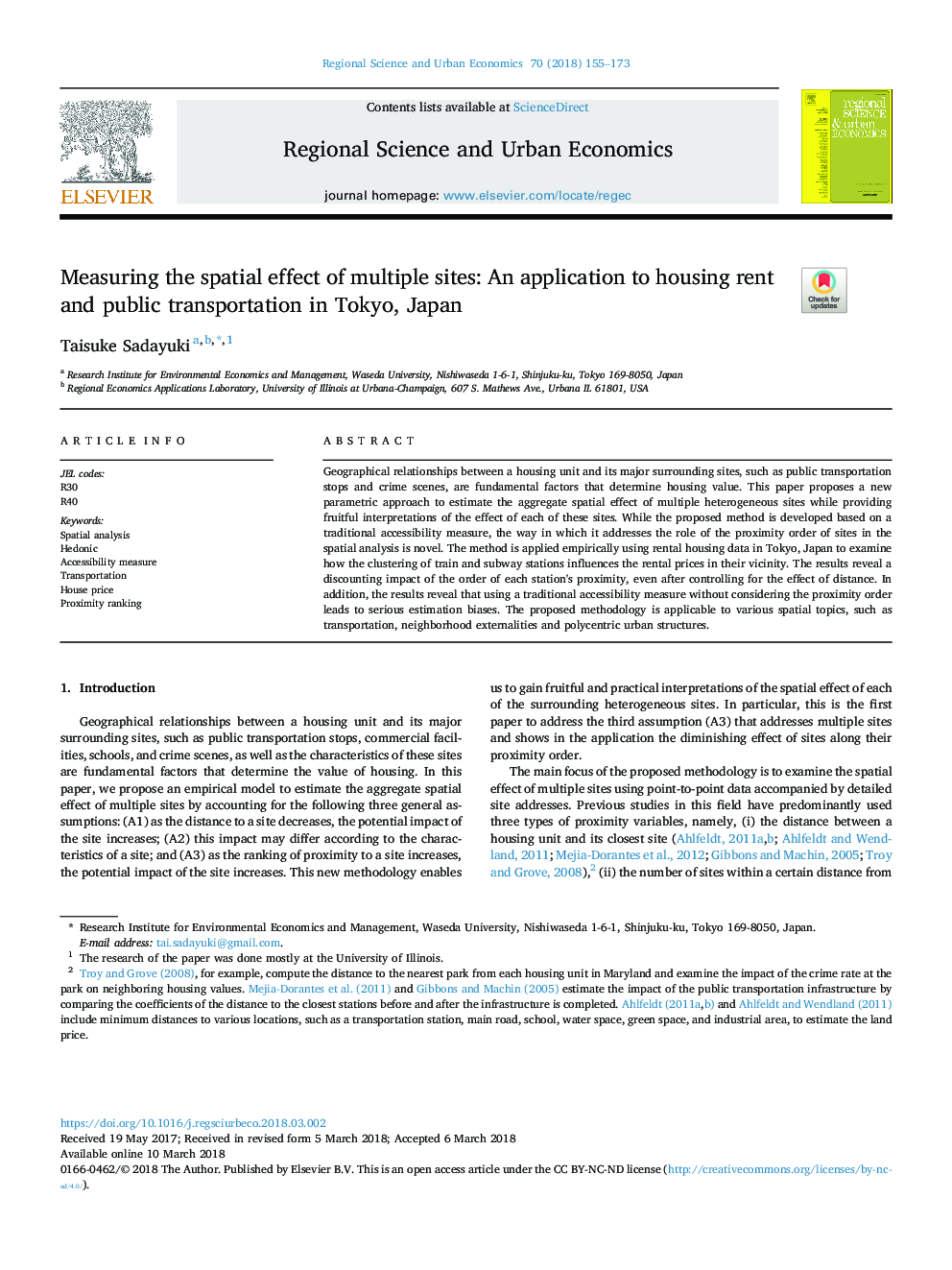| Article ID | Journal | Published Year | Pages | File Type |
|---|---|---|---|---|
| 7383671 | Regional Science and Urban Economics | 2018 | 19 Pages |
Abstract
Geographical relationships between a housing unit and its major surrounding sites, such as public transportation stops and crime scenes, are fundamental factors that determine housing value. This paper proposes a new parametric approach to estimate the aggregate spatial effect of multiple heterogeneous sites while providing fruitful interpretations of the effect of each of these sites. While the proposed method is developed based on a traditional accessibility measure, the way in which it addresses the role of the proximity order of sites in the spatial analysis is novel. The method is applied empirically using rental housing data in Tokyo, Japan to examine how the clustering of train and subway stations influences the rental prices in their vicinity. The results reveal a discounting impact of the order of each station's proximity, even after controlling for the effect of distance. In addition, the results reveal that using a traditional accessibility measure without considering the proximity order leads to serious estimation biases. The proposed methodology is applicable to various spatial topics, such as transportation, neighborhood externalities and polycentric urban structures.
Related Topics
Social Sciences and Humanities
Economics, Econometrics and Finance
Economics and Econometrics
Authors
Taisuke Sadayuki,
